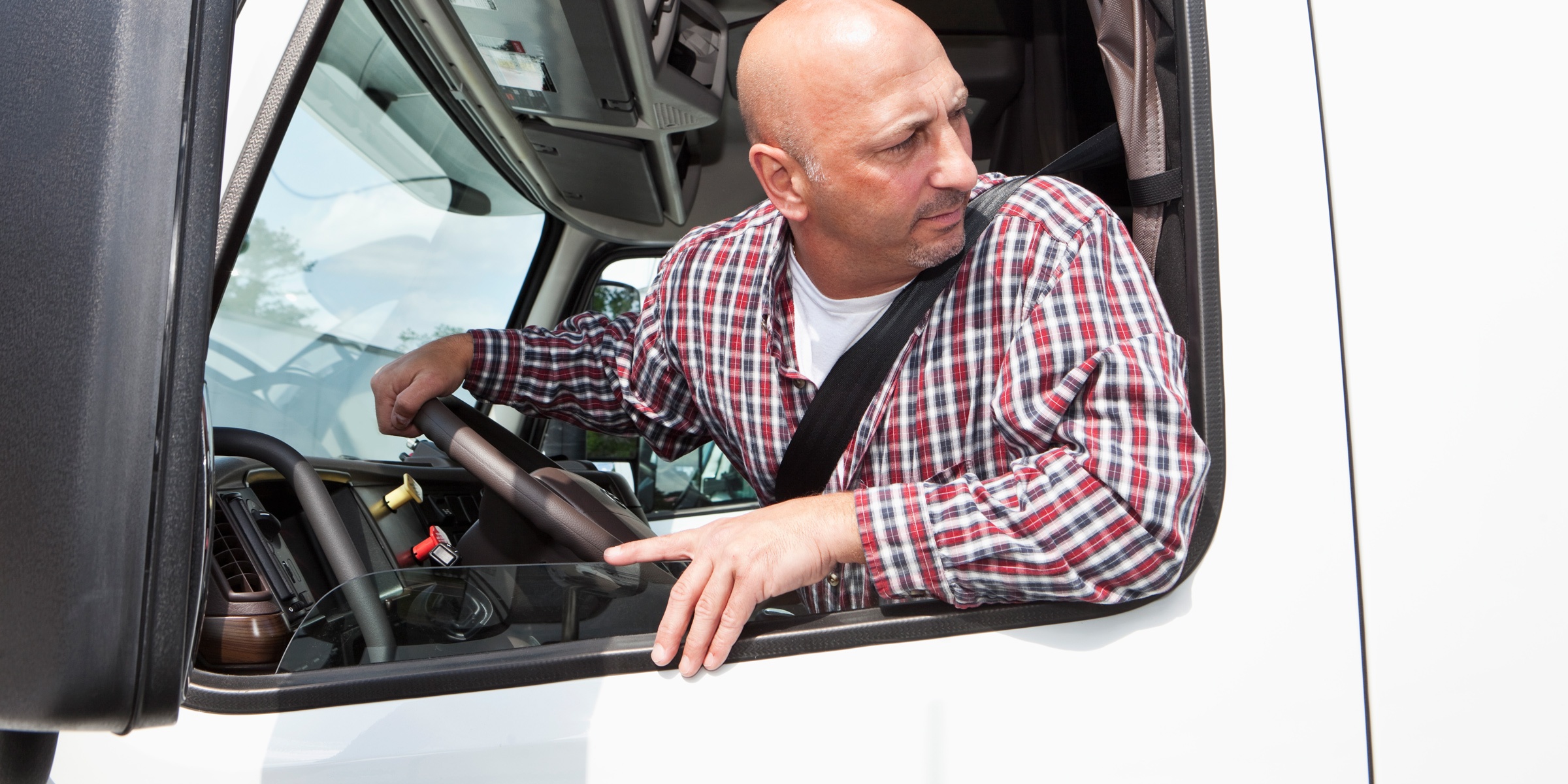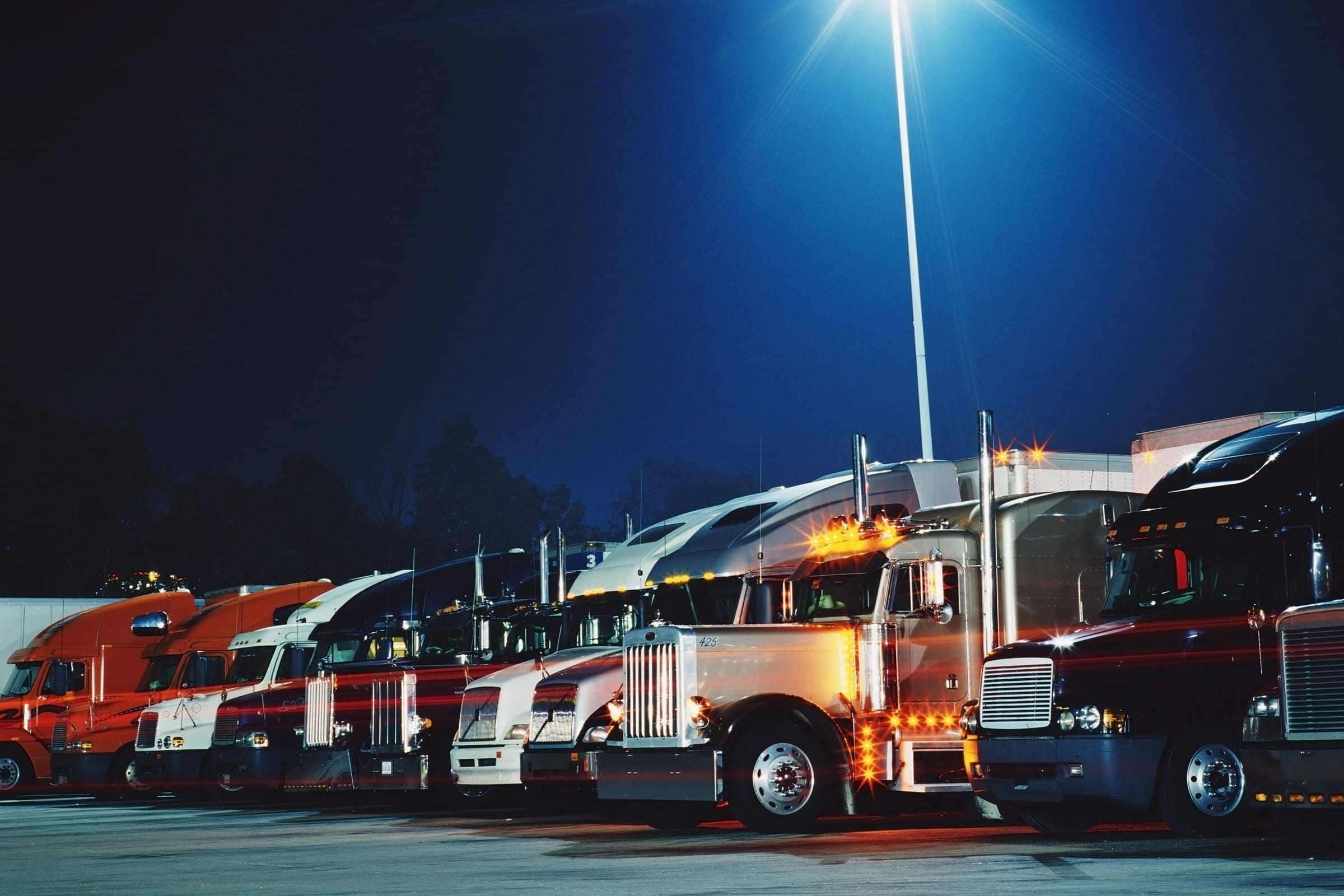Backing

Backing up a truck and hitting a stationary object is one of the most frequent causes of a loss for a trucking company. Read the information below on how to properly back into a straight parking spot, and ask yourself how you can improve your driving style to avoid a backing crash.
Set Up the Maneuver
1. Drive parallel to the open dock, and find a point of reference to which you will align the left rear of the trailer. Some drivers drop an old glove on this spot as a point of reference to see better. (Figure 1)
2. Pull forward slowly a few feet, and then make a hard right turn to point the tractor in the 12 o’clock position. (Figure 2)
3. When the tractor is in the 12 o’clock position, make a hard left turn until the tractor is pointed in the nine o’clock position. At this point, the trailer should be at a 45-degree angle with the left rear of the trailer lined up with your point of reference/red glove. (Figure 2)
Get Out and Look (Goal)
4. Turn on the four-way flashers. Walk around the tractor and trailer to ensure there are no objects around or behind the truck, like a vehicle, pallets, or people. If a reliable spotter is available, this is a good time to coordinate hand signals. (Figure 2)
Back In
5. Get back in the truck and roll down the windows. Turn off the radio and other noise distractions so you can hear your spotter. Honk the horn to alert others nearby that you will be moving. Use your mirrors, and begin backing slowly. Turn the steering wheel hard to the left and keep the left rear corner of the trailer lined up with your point of reference. Make steering corrections as needed. (Figure 3)
6. With the left rear corner of the trailer directly over your point of reference, the trailer should be straight or nearly straight enough to back directly into the parking spot. At this point, stop the truck, and do another walk around. Make sure the left rear corner of the trailer is directly over the point of reference. This action will help ensure you do not hit another trailer or object on either side of the trailer. If you need to reposition the truck, do so before backing in. (Figure 3)
7. Get back in the truck, honk the horn again, and start backing in slowly. Follow the parking space’s white line (if available) as you back in. Use the trailer’s tires as a reference on the lines, as well. Countersteer as needed. Before reaching the dock, stop the vehicle. Get out and look one more time behind the trailer. If all is clear, get back in the truck, and slowly finish backing in until you bump the dock. (Figure 3)
Note: These lists are not intended to be all-inclusive.
The information in this article is provided as a courtesy of Great West Casualty Company and is part of the Value-Driven® Company program. Value-Driven Company was created to help educate and inform insureds so they can make better decisions, build a culture that values safety, and manage risk more effectively. To see what additional resources Great West Casualty Company can provide for its insureds, please contact your safety representative, or click below to find an agent.

© Great West Casualty Company 2018. The material in this publication is the property of Great West Casualty Company unless otherwise noted and may not be reproduced without its written consent by any person other than a current insured of Great West Casualty Company for business purposes. Insured should attribute use as follows: “© Great West Casualty Company 2018. Used with permission by Great West Casualty Company.”
This material is intended to be a broad overview of the subject matter and is provided for informational purposes only. Great West Casualty Company does not provide legal advice to its insureds, nor does it advise insureds on employment-related issues. Therefore, the subject matter is not intended to serve as legal or employment advice for any issue(s) that may arise in the operations of its insureds. Legal advice should always be sought from the insured’s legal counsel. Great West Casualty Company shall have neither liability nor responsibility to any person or entity with respect to any loss, action, or inaction alleged to be caused directly or indirectly as a result of the information contained herein.



